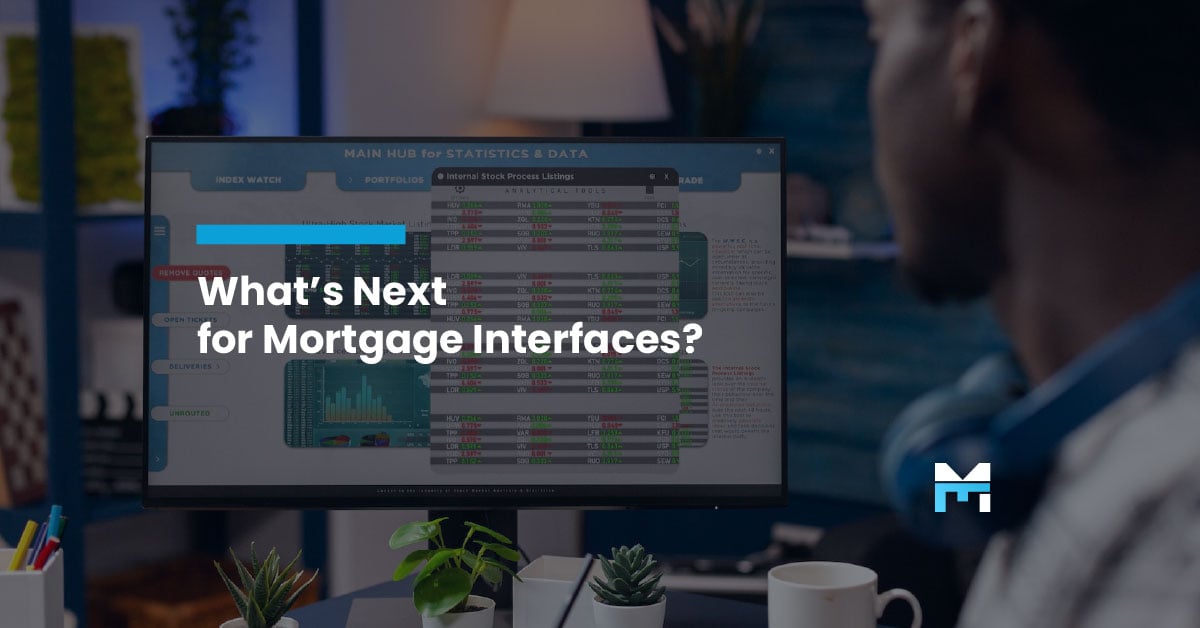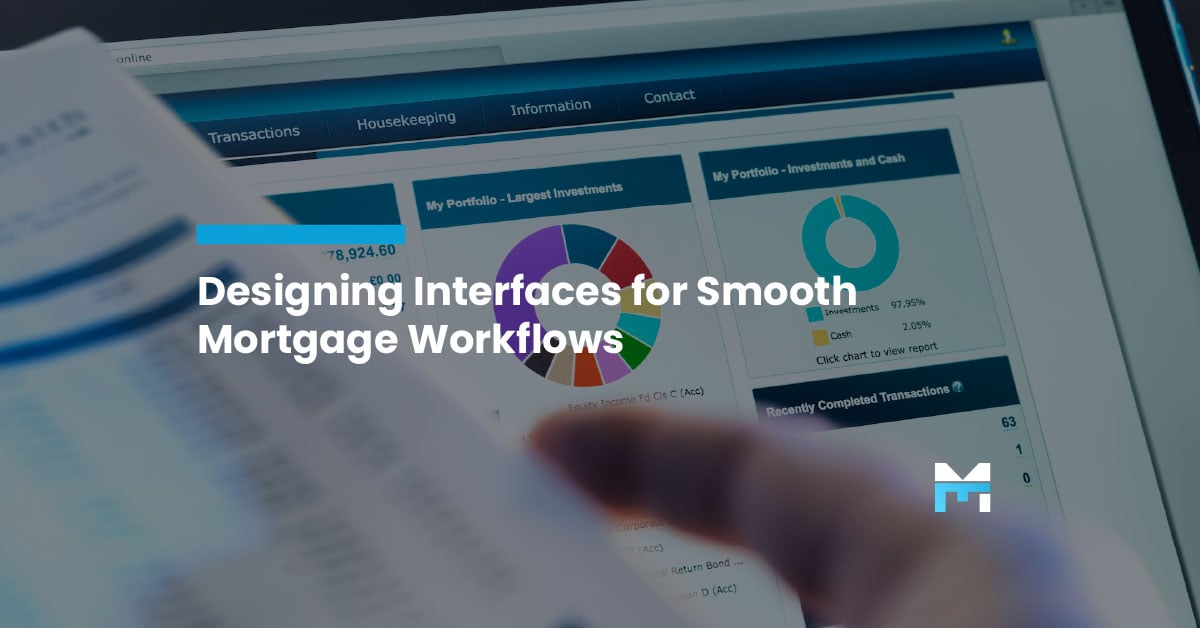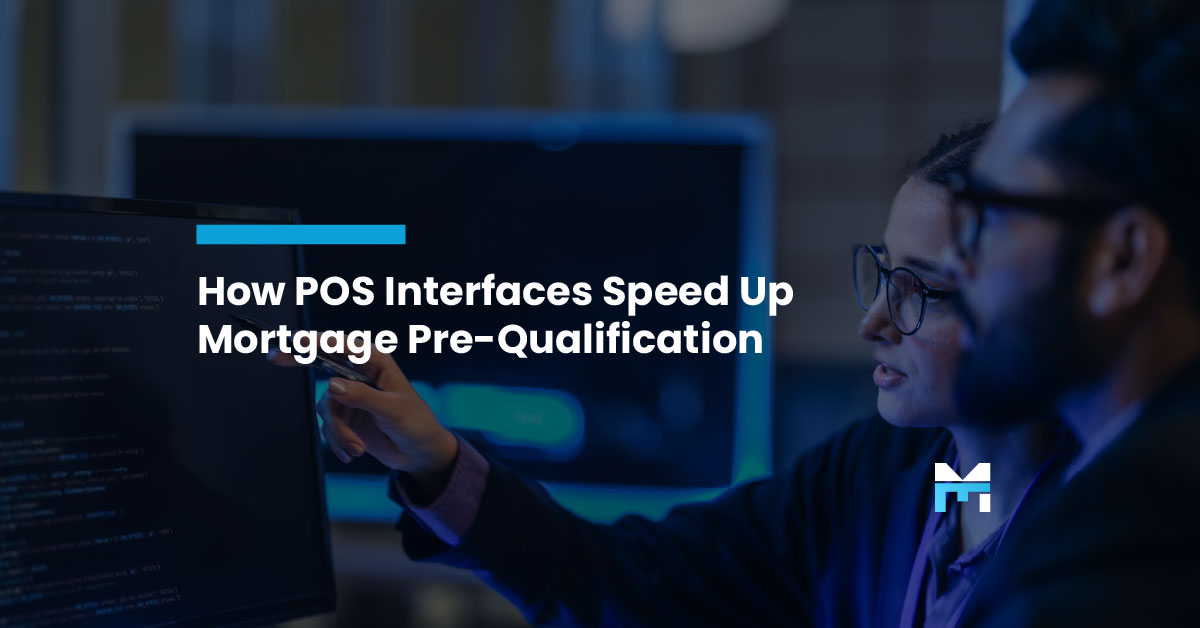Smooth Mortgage Workflows: Designing Interfaces That Boost Speed and Strengthen Compliance
Ever wonder why your borrowers keep abandoning applications at the 75% mark? The answer isn't complicated…it's your workspace interface. When...
Information Security Compliance
Add security and compliance to Microsoft 365
BI Reporting Dashboards
Realtime pipeline insights to grow and refine your learning operation
Integrations for Banks & Credit Unions
Connect LOS, core platforms, and servicing system
Productivity Applications
Deploy customized desktop layouts for maximum efficiency
Server Hosting in Microsoft Azure
Protect your client and company data with BankGrade Security
5 min read
Justin Kirsch : Jul 23, 2025 11:00:00 AM

Think your mortgage platform is modern now? Fast-forward five years, and today’s tools might feel like dial-up internet compared to what’s coming. In just a decade, we’ve gone from stacks of paper files and swivel-chair workflows to sleek dashboards, instant pre-approvals, and cloud-native LOS platforms. But here’s the twist: this transformation isn’t slowing down. It’s speeding up. For mortgage companies looking to stay competitive—and compliant—keeping up with the next wave of interface evolution isn’t just smart. It’s mission-critical.
In this post, we’ll take a fast-paced look at how far mortgage technology has come, what tools like Encompass and Calyx have done to move the needle, and what the future holds for borrower-facing platforms, back-end operations, and everything in between.
Mortgages have been around for centuries, but mortgage tech? That’s a much newer story.
In early America, loan agreements were settled with little more than a handshake and a handwritten ledger. By the 1800s, banks began formalizing the process, and by the mid-20th century, federal programs like the FHA and GI Bill brought lending into the modern era.
But the real tech revolution didn’t hit until the late 20th century.
Then came the 2000s: the age of the Loan Origination System (LOS). Platforms like Encompass and Calyx Gateway emerged, giving lenders the power to digitize nearly the entire loan lifecycle—from app to close.
It was a game-changer… but it was only the beginning.
Digital and Mobile Application Platforms
Applications that once took hours in an office are now completed in minutes from a kitchen table. Borrowers expect frictionless experiences offering online applications, instant document uploads, and real-time status updates. Lenders who fail to deliver this simple digital pathway risk losing share to more responsive competitors.
AI and Machine Learning Integration
Artificial intelligence (AI) and machine learning (ML) are transforming mortgage lending by automating risk assessments, streamlining underwriting processes, and enabling personalized loan offerings. According to Fannie Mae's 2023 survey, 30% of mortgage lenders have either deployed or are trialing AI/ML technologies, with 55% planning broader adoption within two years. Notably, Fannie Mae's integration of AI into its Desktop Underwriter® system has led to a 30–50% reduction in underwriting times, allowing for faster loan processing.
However, as AI becomes more prevalent, concerns about algorithmic bias and fair lending have intensified. The Consumer Financial Protection Bureau (CFPB) has emphasized that existing laws, such as the Equal Credit Opportunity Act (ECOA), apply to AI-driven credit decisions. Lenders must provide specific reasons for credit denials, even when using complex algorithms, to ensure transparency and prevent discrimination. As the industry advances, balancing technological innovation with regulatory compliance and ethical considerations remains paramount.
Workflow Automation
Modern LOS platforms, spearheaded by solutions like Encompass and Calyx, have set the standard for workflow automation. These systems automate document collection, credit pulls, compliance checks, and more. Loan officers spend less time on repetitive data entry and more time serving customers and analyzing complex loans.
Integrated Regulatory and Compliance Tools
With rapidly changing regulations—including the updated CFPB Mortgage Data Collection Requirements for 2025 and beyond, here’s how to prepare your interfaces—interfaces must bake regulatory logic directly into the platform. Today’s best systems auto-flag data anomalies, track audit trails, and update compliance workflows in lockstep with new rules.
Data Analytics and Visualization
Big data isn’t just a buzzword. Smart mortgage interfaces use analytics dashboards to spot application bottlenecks, monitor pipeline health, and optimize cross-sell opportunities. Tools like Tableau or LOS-native dashboards are helping lenders transition from gut feelings to data-driven strategy.
So, what’s around the corner for mortgage interfaces?
Expect less clicking, more connecting. Less re-entry, more real-time. Interfaces are evolving from simple processing tools to intelligent ecosystems, designed to anticipate needs, reduce friction, and deliver a radically better borrower and lender experience.
Here’s what mortgage companies and financial institutions can expect to see (and start preparing for) as we move into the next chapter of digital lending.
We’re not just talking automation—we’re talking intuition.
In the next five years, AI won’t just speed up underwriting. It’ll evolve into a full-fledged co-pilot—analyzing borrower data in real time, flagging red flags before they hit underwriting, and even adapting to new regulations without a full system overhaul.
Expect faster approvals, fewer errors, and interfaces that serve up personalized mortgage options for borrowers with complex financial lives—think gig workers, freelancers, and self-employed applicants with income streams as diverse as their ZIP codes.
But with great AI comes great responsibility. As the technology takes the wheel, regulators will ride shotgun—closely monitoring systems for bias, ensuring transparency, and holding lenders accountable for AI-driven decisions.
The takeaway? AI will make lending smarter. But lenders will need to stay sharper.
Open banking protocols and secure APIs will integrate mortgage interfaces with a web of third-party services. This means real-time financial data flows from bank accounts, tax returns, and payroll solutions directly into the mortgage file, reducing document collection friction and improving accuracy. Borrowers will experience "one-click" applications, while lenders enjoy more precise risk assessment.
Mortgage fraud and document handling errors are costly. Blockchain-enabled interfaces promise tamper-proof records, clear audit trails, and instant verification of property data. Pioneering lenders will pilot blockchain for eNotes and closings, cutting costs and inspiring greater consumer confidence.
Location-independent borrowers want everything on their phone. Expect mobile-first interfaces optimized for e-signatures, push notifications, and even AR/VR-powered virtual property tours. The experience will feel as uncomplicated as managing your mobile banking account.
The future belongs to LOS platforms that offer modular, API-first architecture. Customizable integrations, scalable workflows, and adaptive compliance updates are key. Platforms like Encompass and Calyx continue to innovate, offering plug-and-play upgrades to keep you compliant, efficient, and nimble.
Growing digital complexity brings increased risk. AI-driven threat detection, blockchain safeguards, role-based access controls, and encrypted document storage will become standard features for compliant interfaces.
The shift toward green mortgages and sustainable lending is just beginning. Expect interfaces to not only screen for regulatory compliance, but to support eligibility for energy-efficient mortgage products and track environmental impact for both borrowers and investors.
If you’re already familiar with Encompass by ICE Mortgage Technology or Calyx, you know these LOS have led the field for years. Both allow lenders to automate core workflows, unify communications, ensure up-to-date regulatory compliance, and tap robust analytics. The difference going forward lies in how quickly you adopt their evolving capabilities.
Neither system is static. Both are rapidly rolling out features to support open banking, blockchain pilots, mobile-first experiences, and AI-driven underwriting. Choosing the right LOS, or fine-tuning the one you have, has never been more important.
Mortgage companies and financial institutions face both risk and opportunity over the next five years. Adopt a wait-and-see approach, and you risk getting left behind by competitors leveraging smarter, faster tools. Proactively prepare by:
Stay agile, seek out education, and consider regular consultation with technology partners who speak both compliance and innovation fluently.
The next five years will redefine what’s possible in mortgage lending. Interfaces aren’t just IT infrastructure; they are now drivers of business reputation, compliance standing, and borrower loyalty. By anticipating the trends outlined here and aligning your organization with platforms like Encompass and Calyx, you can stay ahead of the curve.
If you’re ready to move from reactive change to proactive leadership, discover how Mortgage Workspace powers digital lending transformation for modern financial organizations. Book your Mortgage Workspace demo now and build a path toward smarter, faster, and more secure mortgage operations.

Ever wonder why your borrowers keep abandoning applications at the 75% mark? The answer isn't complicated…it's your workspace interface. When...

Picture this: Your loan officer just spent 20 minutes entering the same borrower information into three different systems. Meanwhile, your processor...

The mortgage industry has a reputation for being slow, complicated, and buried in paperwork. For decades, the pre-qualification process felt more...